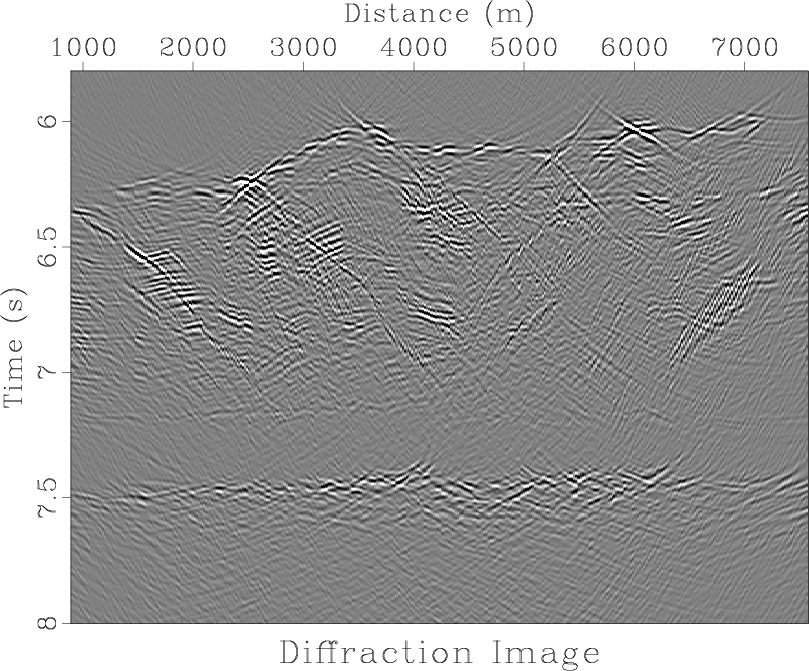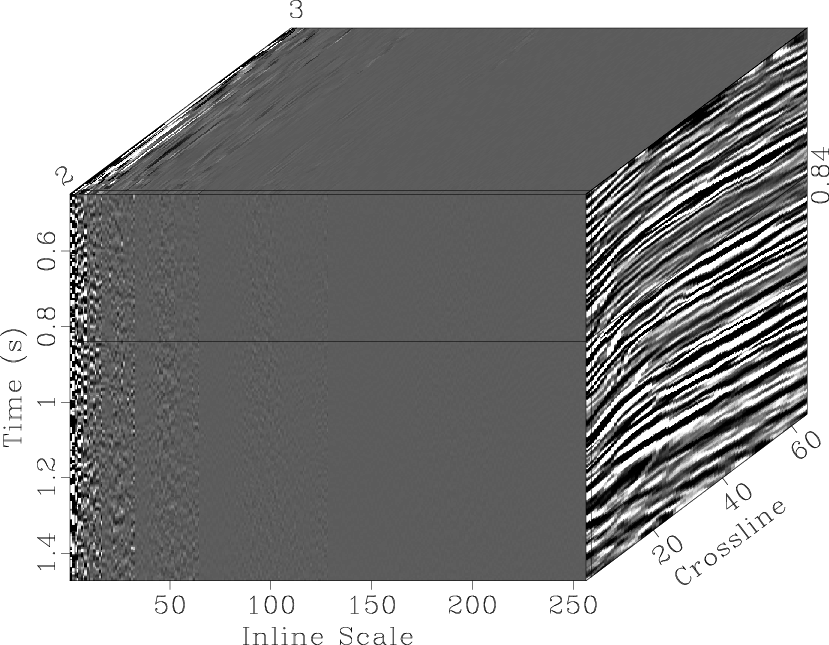A new paper is added to the collection of reproducible documents: Diffraction imaging and time-migration velocity analysis using oriented velocity continuation

We perform seismic diffraction imaging and time-migration velocity analysis by separating diffractions from specular reflections and decomposing them into slope components. We image slope components using migration velocity extrapolation in time-space-slope coordinates. The extrapolation is described by a convection-type partial differential equation and implemented in a highly parallel manner in the Fourier domain. Synthetic and field data experiments show that the proposed algorithms are able to detect accurate time-migration velocities by measuring the flatness of diffraction events in slope gathers for both single and multiple offset data.





